 | | | 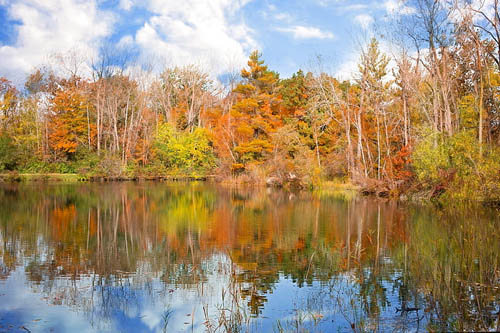 During the month of October, the coastlines transform, trading in the warmth of summer for the cool whispers of autumn. As the days shorten and a crisp breeze carries the scent of the sea, October invites a sense of mystery and reflection—a time when nature begins its retreat and shadows lengthen. As the leaves change color, the ocean changes rhythms, bringing with it a touch of the supernatural in the air. During the month of October, the coastlines transform, trading in the warmth of summer for the cool whispers of autumn. As the days shorten and a crisp breeze carries the scent of the sea, October invites a sense of mystery and reflection—a time when nature begins its retreat and shadows lengthen. As the leaves change color, the ocean changes rhythms, bringing with it a touch of the supernatural in the air.
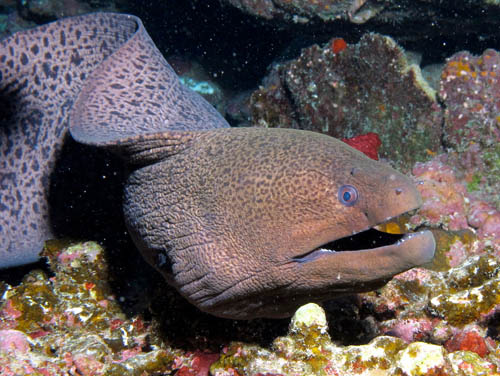 Our October RCC Coasts and Ocean Observer issue taps into this season’s haunting allure, featuring stories that delve into the eerie and the unexpected. As Halloween approaches, we explore the intriguing mysteries of the deep sea, with articles shedding light on some of the ocean’s lesser-known, otherworldly creatures that lurk beneath the surface. From bioluminescent organisms that light up the night waves to the curious behavior of deep-sea lifeforms, these stories invite us to peer into the ocean's darker corners. We also continue looking into the chilling realities of coastal erosion which evoke for us nature's constant transformation, as familiar shorelines morph into something new and worrisome. Our October RCC Coasts and Ocean Observer issue taps into this season’s haunting allure, featuring stories that delve into the eerie and the unexpected. As Halloween approaches, we explore the intriguing mysteries of the deep sea, with articles shedding light on some of the ocean’s lesser-known, otherworldly creatures that lurk beneath the surface. From bioluminescent organisms that light up the night waves to the curious behavior of deep-sea lifeforms, these stories invite us to peer into the ocean's darker corners. We also continue looking into the chilling realities of coastal erosion which evoke for us nature's constant transformation, as familiar shorelines morph into something new and worrisome. This month, we also reflect on the profound impact of Hurricanes Helene and Milton, which have left scars on both the land and the families affected. In this issue, we honor the lives lost in the storms' wake, recognizing the strength of communities that have come together in the face of such adversity. Stories of those who weathered the storms, alongside accounts of rebuilding efforts serve as a stark reminder of the delicate balance between resilience and vulnerability that defines life along the coast — especially in an age when climate change fuels fiercer hurricanes. 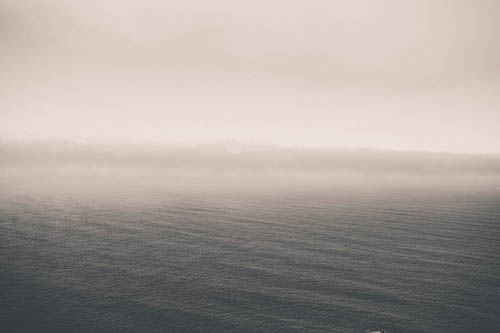 Our coverage this month captures the essence of October, blending scientific inquiry with the uncanny, and celebrating the power of community amidst change. It’s a time when the coast is more than just a place; it’s a feeling, a mystery, a reminder of the deep and sometimes unknowable forces that shape our world. As the natural world shifts around us, there’s still magic to be found in the turning tide, a magic that speaks to the resilience of nature and the enduring spirit of those who live alongside it. Our coverage this month captures the essence of October, blending scientific inquiry with the uncanny, and celebrating the power of community amidst change. It’s a time when the coast is more than just a place; it’s a feeling, a mystery, a reminder of the deep and sometimes unknowable forces that shape our world. As the natural world shifts around us, there’s still magic to be found in the turning tide, a magic that speaks to the resilience of nature and the enduring spirit of those who live alongside it.  Finally, I want to remind our readers that amidst the frenzy of November’s approaching election, the importance of casting a vote has never been clearer, especially when it comes to protecting our oceans and coasts. All of the environmental issues which we advocate for through the Rachel Carson Council are directly affected by policy decisions at every level of government. This election is an opportunity to make your voice matter for the health of our planet and for the resilience of our communities. Voting can lead to stronger environmental protections, support sustainable practices, and ensure that leaders prioritize the future of our natural world. Your vote and that of every environmentalist can be a step towards a healthier planet! Finally, I want to remind our readers that amidst the frenzy of November’s approaching election, the importance of casting a vote has never been clearer, especially when it comes to protecting our oceans and coasts. All of the environmental issues which we advocate for through the Rachel Carson Council are directly affected by policy decisions at every level of government. This election is an opportunity to make your voice matter for the health of our planet and for the resilience of our communities. Voting can lead to stronger environmental protections, support sustainable practices, and ensure that leaders prioritize the future of our natural world. Your vote and that of every environmentalist can be a step towards a healthier planet! | | | | | | | |  RCC Presidential Fellow – Jack Sanitate RCC Presidential Fellow – Jack Sanitate
RCC Presidential Fellow, Jack Sanitate, is a senior at Duke University double majoring in Public Policy and Theater Studies, with a minor in Environmental Sciences & Policy. Jack serves as the co-lead of the RCC Coasts and Ocean program with Bob Musil and editor of the RCC Coasts and Ocean Observer. | | | | | | ‘The ocean doesn’t care what color I am’: Black US Surfers Reclaim the Waters As a new documentary illuminates surfing’s African roots, Black people revive their sacred connection to the sport. Over the summer, around 150 people gathered with surfboards at Cowell Beach in Santa Cruz, California, for a paddle out. Under the midday sun, dedicated surf enthusiasts, novices and those who’d just picked up a board for the first time entered the water. | | | | | | | | The U.S. Gets a New National Marine Sanctuary, the First Led By a Tribe More than 4,500 square miles of ocean will soon be protected by the federal government off the Central California coast. The Biden administration is creating a new national marine sanctuary, which will be the third largest in the U.S. The sanctuary is also the first to be led by Indigenous people. It was nominated by members of the Northern Chumash Tribe, who drove the effort for more than a decade to protect the rugged coastline that is their historical homeland. | | | | | | | | Coastal Cities Have a Hidden Vulnerability to Storm Surge – Caused by Humans Centuries ago, estuaries around the world were teeming with birds and turbulent with schools of fish, their marshlands and endless tracts of channels melting into the gray-blue horizon. Fast-forward to today, and in estuaries such as New York Harbor, San Francisco Bay and Miami’s Biscayne Bay – areas where rivers meet the sea – 80% to 90% of this habitat has been built over. | | | | | | | | NC Coastal Symposium Discussed Solutions For Coastal Erosion, Home Collapses Amid Sea Level rise and Climate Change A recent symposium on the North Carolina coast brought together scientists, environmental groups, and others to brainstorm solutions for coastal erosion amid sea level rise and climate change. A stunning event on the meeting’s second day emphasized the need for collaboration among those experts. | | | | | | | | A Tale of Two Hurricanes Finds More That Differs Than Is the Same Helene in North Carolina and Milton in Florida were very different storms in very different places. Cindy Miller wasn’t sure where to begin the cleanup this weekend at her home in Englewood, Fla. Hurricane Milton had drenched her home and dumped debris everywhere. Much of it was not even hers. A sofa, doors and shoes littered the backyard, along with detritus that remained from Hurricane Helene, the deadliest hurricane to hit the U.S. mainland in nearly two decades. | | | | | | | | Florida Digs Out of Mountains of Sand Swept in By Back-to-Back Hurricanes When a hurricane sets its sights on Florida, storm-weary residents may think of catastrophic wind, hammering rain and dangerous storm surge. Mounds of sand swallowing their homes? Not so much. That’s the reality for some after Hurricanes Helene and Milton clobbered Florida’s Gulf Coast with back-to-back hits in less than two weeks. Storm surge as high as 10 feet (3 meters) swept mountains of sand into communities — in some areas, 5 feet (1.5 meters) tall or higher. | | | | | | | | Recent Hurricane Helene and Hurricane Milton Spawn Bloom of ‘Red Tide’ Off Florida Coast, Threaten Wildlife According to NOAA scientists using the Ocean Land Color Imager (OLCI), a significant harmful algal bloom has developed off Florida’s central west coast panhandle. Currently situated offshore, this “blob” is not yet affecting coastal residents or visitors directly. However, as it drifts closer to shore, more pronounced human impacts are expected. Meanwhile, marine life is already being harmed by the red tide caused by Karenia brevis algae. | | | | | | | | North Carolina's Hurricane Damage is Not Just Destroyed Homes, But Contaminated Water Systems, Experts Say Hurricane Helene brought death and destruction to North Carolina, with the western part of the state in particular seeing entire towns and homes washed away. In the aftermath of the storm, the state is facing many issues that could affect the welfare of its residents, including the quality of its water supply, according to one Northeastern University expert. | | | | | | | | | | Hurricane Season Isn't Over Yet. Here's Why North Carolina Residents Need to Stay Vigilant. Despite tropical storm-induced flooding in the mountains and along the coast, experts say NC isn't out of the woods yet as hurricane season drags on First Tropical Storm Debby, a slow-moving storm that trudged up the East Coast in early August before making a second landfall along the central South Carolina coast, drenched the Cape Fear region with more than 15 inches of rain in places. | | | | | | | | A Celebrated Ocean Liner Is Being Turned into the World’s Largest Artificial Reef For decades, the SS United States has been moored off Philadelphia as a reminder of the nation’s seafaring past, but looking now to the future, it will be sunk to create the world’s largest artificial reef. While coral reefs are in danger worldwide, features like concrete blocks and shipwrecks can offer vital shelter and habitat to dozens of marine species, and many old vessels in many different countries have gone to rest in this way. | | | | | | | | A Spooky Discovery Deep in the Pacific: A Vew Species of Ghost Shark It may be early to get the Halloween decorations out for most, but in the deep waters of the Pacific Ocean spooky season is well underway. Scientists said Tuesday they had discovered a new species of ghost shark that lives exclusively in the waters off Australia and New Zealand. The Australasian Narrow-nosed Spookfish was found during research surveys in the Chatham Rise, an area of ocean floor to the east of New Zealand, according to the National Institute of Water and Atmospheric Research (NIWA) based in Auckland. | | | | | | | | 5 Eerie Ocean Animals As Halloween approaches, spooky creatures come to mind — ghouls, ghosts, and goblins. But what if we told you that some of the most eerie animals live deep beneath the waves? Here are five ocean animals that are always Halloween ready! Vampire squids are found deep in the ocean, below where sunlight reaches. While they don’t suck blood, their red eyes, dark coloration, and the cloak-like webbing between their arms certainly gives them a very “vampire-y” appearance. | | | | | | | | How the Monterey Bay Aquarium is Shaping the Future of Ocean Conservation Anyone who has wandered by the glowing exhibits of mesmerizing jellyfish or seen children press their noses to the glass of the iconic Kelp Forest exhibit can understand why the Monterey Bay Aquarium is beloved by children and adults alike worldwide. Beyond offering extraordinary experiences that inspire awe and wonder, the Aquarium is also a renowned leader in science education and a global voice for marine science and public policy. | | | | | | | | Social Media Influencers’ Bad Behavior With Marine Wildlife is Risky For Animals, Too (commentary) Many of us have likely come across that viral video on social media – a young woman touching the back of a large, possibly pregnant, great white shark, swimming alongside it for about 10 seconds. The woman in question, Ocean Ramsey, has two million followers on Instagram and has been capturing attention by demonstrating that when approached in a certain way, sharks are not a threat to humans. | | | | | | | | Red and Blue R.I. Voters Take Different Views on Green Energy in Polling on Offshore Wind Coastal residents and inlanders support offshore wind. Over 60% of Republicans disapprove. Political affiliation sways Rhode Islanders opinions on offshore wind far more than how close they live to the coastline, according to a new Rhode Island Current poll. Nearly six in 10 survey participants supported plans to bring more offshore wind to Rhode Island, compared with 34% who disapproved. | | | | | | | | Unlocking Ocean Power: $3.6M For Community-centric Wave Energy Converters Wave energy could power millions of homes, but to make a splash in the industry, the tech must balance engineering, socio-economic and environmental trade-offs. Coastal communities are partnering with a multidisciplinary research team to determine the best way to harvest wave energy at Beaver Island, Michigan, and Nags Head, North Carolina. The project is led by the University of Michigan, supported with $3.6 million from the National Science Foundation. | | | | | | | | Wave Energy: An Untapped Resource for Coastal Communities Generating renewable energy from the motion of waves is an emerging option for businesses in coastal communities where land-based options aren't feasible, transmissions lines for faraway energy are expensive, and residents raise aesthetic objections to offshore wind turbines. Renewable energy can be a challenge for businesses with a foothold in coastal communities. Nearby land for solar arrays and wind turbines is scarce, and new transmission lines for faraway renewable resources are expensive. One emerging option is wave energy. | | | | | | | | A Holistic Approach To Investigate Climate Change and Marine Neurobiology A new, state-of-the-art research center at the Scripps Institute for Oceanography, University of California San Diego, will offer a unique window into how climate change is impacting the nervous systems of marine life. The Allen Discovery Center for Neurobiology in Changing Environments will unite expert scientists from a broad range of fields, including those that typically conduct research on ocean vessels to scientists that primarily work in medical laboratories. | | | | | | | | Hawaii to Boost Power Grid by Harnessing Ocean Waves An 826-ton buoy hooked up at the U.S. Navy's Wave Energy Test Site off the coast of Oahu will be connected to the state's electrical grid by an undersea cable, making a small but important move away from fossil fuels. On the windward side of Oahu in Kaneohe Bay sits a giant buoy that could help move Hawaii’s electric grid toward more renewable resources by harnessing the motion of the ocean. | | | | | | | | Plastic Pollution Sounds Just Like Food to Deep-Diving Whales To whales that hunt with soundwaves in the lightless depths of the ocean, a torn plastic party balloon and a delicious squid seem to be remarkably similar, according to a new study that put some plastic beach trash through underwater acoustic testing. "These acoustic signatures are similar, and this might be a reason that these animals are driven to consume plastic instead of, or in addition to, their prey," said Duke University graduate student Greg Merrill, who led the research. | | | | | | | | Weather Forecasting Is Deadly for Marine Wildlife Latex balloons designed to collect high-altitude data become a threat to marine animals after they burst—though the scale of their impact remains unknown. On a fall day in 2023, a juvenile Atlantic yellow-nosed albatross was lying listless in southeastern Brazil’s Santos Basin. Beach monitors found the young bird in the sand, weak and hypothermic. The cause of the albatross’s misery was evident: it was caught in a weather balloon. | | | | | | | | Water Dispute Before Supreme Court Gives Rise to Unusual Alliances The justices heard arguments on Wednesday in a long-simmering dispute between San Francisco and the E.P.A. over regulation of water pollution. The Supreme Court on Wednesday appeared to side with the City of San Francisco in its unusual challenge of federal water regulations that it said were too vague and could be interpreted too strictly. The outcome could have sweeping implications for curtailing water pollution offshore and would deal another blow to the Environmental Protection Agency. | | | | | | | | The US Fishing Industry Faces Warming Waters Climate change means low yields and uncertain times for New England fishers. Before dawn in the coastal Maine town of Jonesport, Nick Perreault wakes up, caffeinates, and prepares before his day fishing for lobster. Driving through town, Perreault mentally gears up for another day of captaining his fishing vessel. He boards his boat garbed in layers, waterproof boots, and oil pants, and navigates out of the harbor. Operating without a deckhand, he baits, empties, stacks, and drops traps. | | | | | | | | At U.S. House Debate in Kodiak, Candidates Differ on Future of Alaska Fisheries A two-hour debate on Alaska fisheries issues turned contentious in its final moments as Republican U.S. House candidate Nick Begich criticized incumbent Democratic Rep. Mary Peltola over an ad stating that a Begich victory would mean “our fish are gone.” The exchange was the lone heated issue between the two frontrunners in Alaska’s U.S. House election, which will decide one of only a few tossup races in the 435-seat House of Representatives. | | | | | | | | More U.S.-Caught Pacific Bluefin Tuna to Hit U.S. Markets Next Year Commercial Pacific bluefin tuna vessels in the United States can harvest almost 80 percent more fish in 2025–2026. The Inter-American Tropical Tuna Commission increased catch limits during a meeting in Panama in early September. This decision comes 3 months after an International Scientific Committee for Tuna and Tuna-Like Species in the North Pacific Ocean stock assessment found the Pacific bluefin tuna stock to be rebuilt a decade ahead of schedule. | | | | | | | | Aquaculture Uses Far More Wild Fish Than Previously Estimated, Study Finds A study published in the journal Science Advances suggests that global fish farming, or aquaculture, may rely on significantly larger quantities of wild-caught ocean fish than previously calculated. The study is part of a special issue focused on expanding contributions from the aquaculture industry to food systems with an aim towards sustainability. These findings call into question long-held assumptions about the sustainability of the rapidly growing aquaculture industry. | | | | | | | | Just 2.8% of the World’s Ocean Is ‘Effectively’ Protected Despite 2030 Conservation Target, Report Warns Ahead of UN Biodiversity Conference World governments are falling far short of an international pledge to conserve 30% of the ocean by 2030, according to a new report published ahead of next week’s COP16 summit in Cali, Colombia. Less than two years after governments pledged to step up conservation of the ocean by decade’s end, a new report has found that a mere 2.8% is “effectively” protected. | | | | | | | | Earth’s Biodiversity Crisis: Key Numbers Revealed Experts affirm that humans pose the most significant threat to Earth’s ecosystems—both land and sea—and, by extension, to ourselves. As the COP16 biodiversity summit enters its second week in Cali, Colombia, delegates are assessing progress on 23 targets agreed in Canada two years ago aimed at halting and reversing environmental destruction by 2030. Here’s a look at the crisis, in numbers. | | | | | | | | COP16 gridlock over money drags into week two of UN biodiversity talks, with all eyes on wealthy Global North countries Cali, Colombia, As COP16 resumes talks for a second week, rich countries will be faced with answering for a week of stumbling inaction on the delivery of finance for implementation. As ministers arrive and the agenda for the final week of biodiversity negotiations begins taking form, Greenpeace calls for urgent delivery on commitments to close the nature finance gap and to ensure direct access to funding for Indigenous Peoples and local communities. | | | | | | | | SeaTrees Unveils Marine Biodiversity Credits at COP16, Pioneering New Ocean Conservation Funding Model SeaTrees introduces a groundbreaking funding model at COP16, using blockchain technology to drive ocean conservation and restore marine ecosystems. At the COP16 Biodiversity Conference in Cali, Colombia, SeaTrees made headlines by launching the world’s first marine biodiversity credits. This new funding model, called "Biodiversity Blocks," aims to close the gap in conservation funding for marine ecosystems. | | | | | | | | | 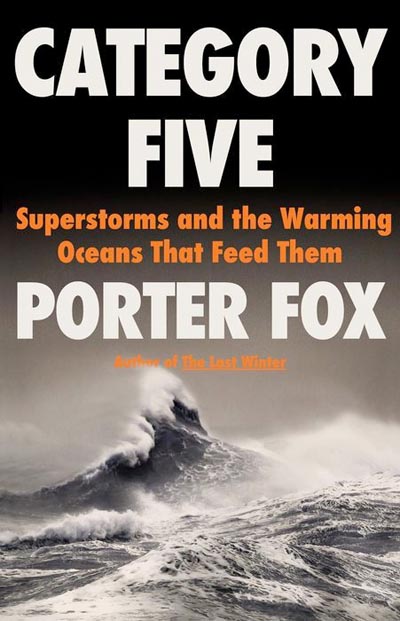 Superstorms, hurricanes, typhoons, and spiraling freak weather: the fallout of global warming is a real-life natural thriller, as captured in Porter Fox’s urgent and stunning story of chasing the world’s most devastating storms. Superstorms, hurricanes, typhoons, and spiraling freak weather: the fallout of global warming is a real-life natural thriller, as captured in Porter Fox’s urgent and stunning story of chasing the world’s most devastating storms.
Here is the story of the largest storms on earth and how those storms are growing bigger and stronger. The tale of extreme weather doesn’t begin with floods, fires, or even the air that carries this change to our lives. It begins with the ocean. Oceans create weather, climate, floods, droughts, and most of the geophysical fallout of global warming. Exactly how, award-winning writer Porter Fox contends, depends on invisible ocean currents, planetary cycles just now being defined, and processes in the deep ocean that may well have already saved us from the worst effects of the climate crisis. In an attempt to avert a coming age of superstorms, sea level rise, and catastrophic warming, scientists followed the lead of a college drop-out-turned-maverick sailor and storm-chaser; a Romanian refugee turned BBC radio host turned circumnavigating mapmaker; and an audacious new attempt to study storms above as well as deep below the ocean depths, using drones. Throughout Category Five, Fox shadows these explorers, scientists, oceanographers, and weather forecasters in an attempt to understand, forestall, and possibly harness the awesome power of our oceans.” | | | | | | Best Films of the DC Environmental Film Festival 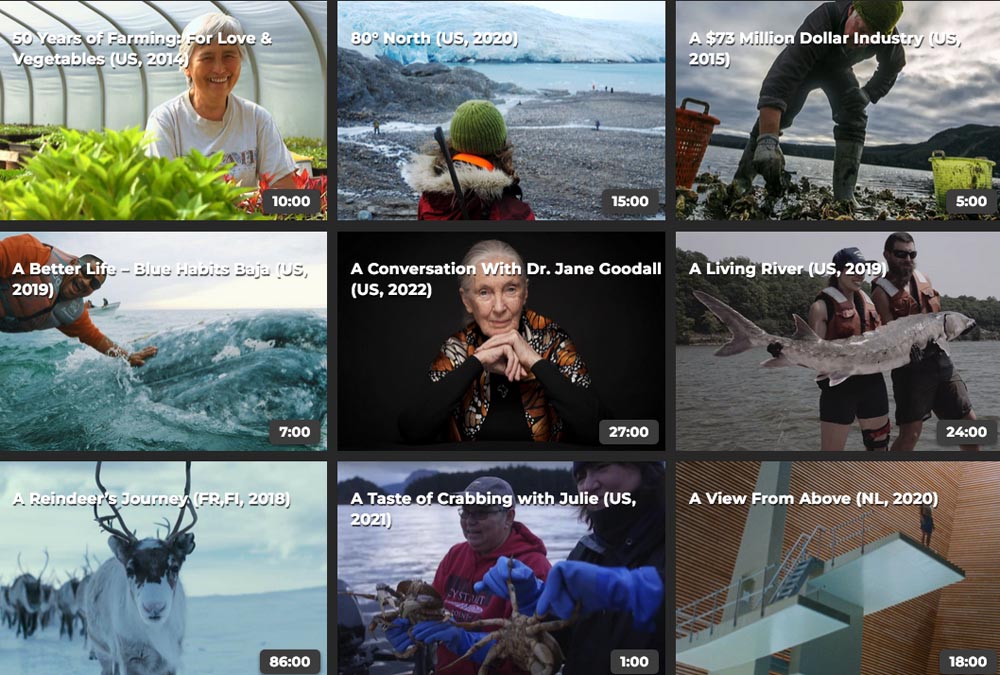 A selection of the best films of the DC Environmental Film Festival with several on coasts and ocean themes. Click to watch | | | | | | The October 2024 issue of RCC's Coasts and Ocean Observer was produced by Ross Feldner | | | | | |  The Rachel Carson Council Depends on Tax-deductible Gifts From Concerned Individuals Like You. Please Help If You Can. The Rachel Carson Council Depends on Tax-deductible Gifts From Concerned Individuals Like You. Please Help If You Can. | | | | | | | |  Sign Up Here to Receive the RCC E-News and Other RCC Newsletters, Information and Alerts. Sign Up Here to Receive the RCC E-News and Other RCC Newsletters, Information and Alerts. | | | | | | | | | | | |